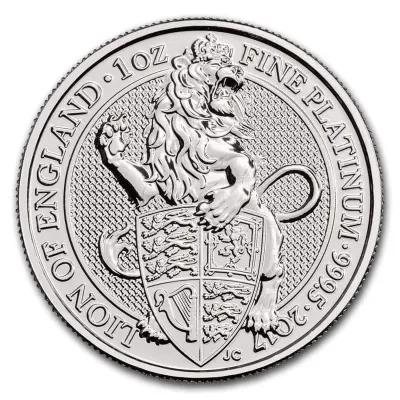
The History of Platinum: Origins and Coinage
Origins of Platinum
Platinum, a precious metal known for its remarkable resistance to corrosion and high melting point, has a fascinating history that dates back to ancient times. The earliest known use of platinum can be traced to pre-Columbian South America, particularly in what is now Ecuador. Indigenous peoples in this region used platinum in jewelry and ceremonial artifacts as early as 1200 BC. The metal's presence in these artifacts went largely unnoticed by the rest of the world until the Spanish conquest in the 16th century.
The Spanish conquistadors initially encountered platinum in alluvial deposits while mining for gold in Colombia. Mistaking it for an unrefined form of silver, they named it "platina," meaning "little silver." Due to its high melting point, they considered it a nuisance and discarded it. However, European scientists began studying platinum in the 18th century, recognizing its unique properties. Antonio de Ulloa, a Spanish naval officer and scientist, is credited with bringing the first specimens of platinum to Europe in 1735.
Platinum in Coinage
The story of platinum coinage is one of innovation, experimentation, and, at times, deception. Let's explore how various countries have utilized platinum in their currency, both legitimately and fraudulently.
Russia: The Pioneers of Platinum Coinage
Russia was the first country to mint platinum coins, an endeavor that began in the early 19th century. Under the reign of Tsar Alexander I, Russia faced an abundance of platinum from the Ural Mountains. In an attempt to utilize this surplus, the government decided to mint coins from the metal. From 1828 to 1845, Russia issued platinum coins in denominations of 3, 6, and 12 rubles. These coins were notable for their durability and resistance to wear, but they were eventually discontinued due to the difficulty of distinguishing them from silver coins and the metal's decreasing value relative to gold.
Platinum Counterfeits
The hardness and resistance of platinum made it an attractive material for counterfeiters. In the mid-19th century, unscrupulous individuals in various countries used platinum to create fake gold coins. Due to its similar density to gold, platinum could be coated with a thin layer of gold to produce counterfeit coins that were difficult to detect. This problem became particularly acute in countries like the United States and France, where counterfeit gold coins flooded the markets. The prevalence of such counterfeits contributed to the decline in the use of platinum in coinage.
Modern Platinum Coins
Platinum's resurgence in coinage came in the late 20th century, driven by its appeal to investors and collectors. Several countries began issuing platinum bullion coins, starting with the introduction of the American Platinum Eagle by the United States Mint in 1997. This coin, available in various denominations, features the Statue of Liberty on the obverse and an eagle on the reverse. Other notable examples include:
- The Canadian Platinum Maple Leaf:Issued by the Royal Canadian Mint since 1988, this coin is known for its high purity and the iconic maple leaf design.
- The Australian Platinum Koala: First minted in 1988 by the Perth Mint, this coin features different depictions of koalas on the reverse.
- The Chinese Platinum Panda: Issued since the 1980s, this coin showcases China's national treasure, the giant panda.
These modern coins are valued not only for their platinum content but also for their numismatic appeal. They are minted with high purity standards, typically .9995 fine platinum, and are sought after by both investors and collectors.
Conclusion
Platinum's journey from a discarded nuisance to a treasured precious metal highlights its unique properties and the evolving attitudes towards it over centuries. While its use in coinage has been sporadic and often driven by specific economic conditions or challenges, platinum remains a symbol of durability and rarity. From the pioneering efforts of Russia in the 19th century to the modern bullion coins cherished by collectors worldwide, platinum's legacy in the world of coinage is a testament to human ingenuity and the enduring allure of this remarkable metal.
We are working hard to provide outstanding service to our clients.
Do not hesitate to contact us for any questions. We will be happy to recommend valuable Gold Coins for your Collection or Investment.
